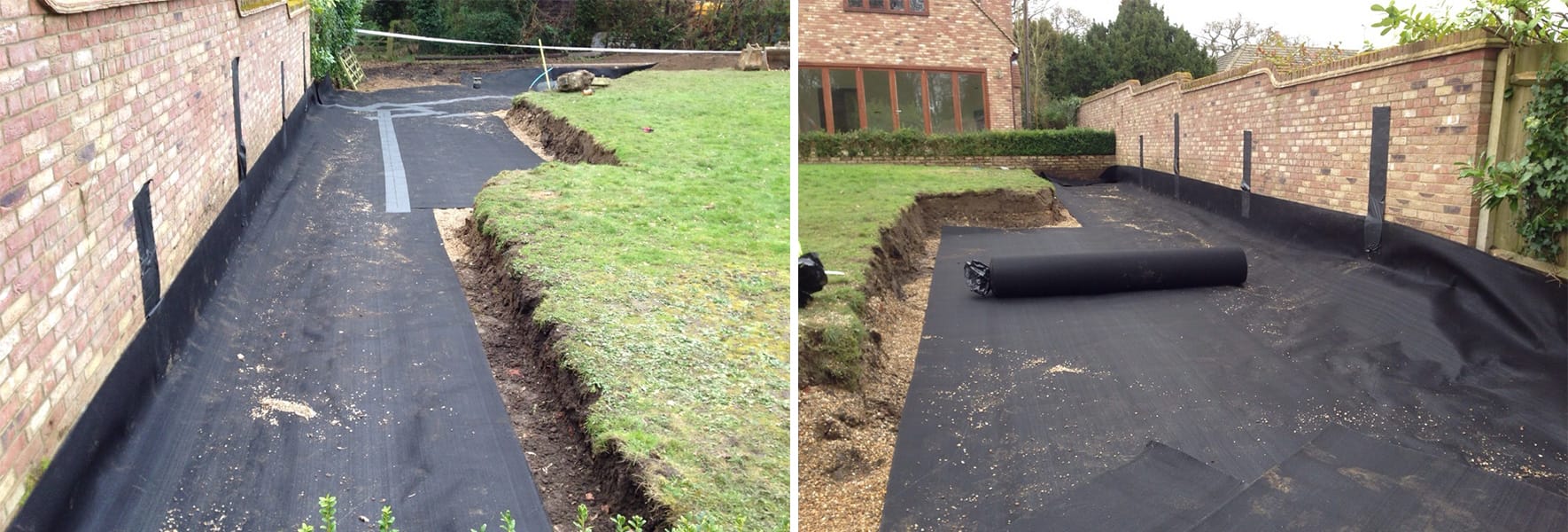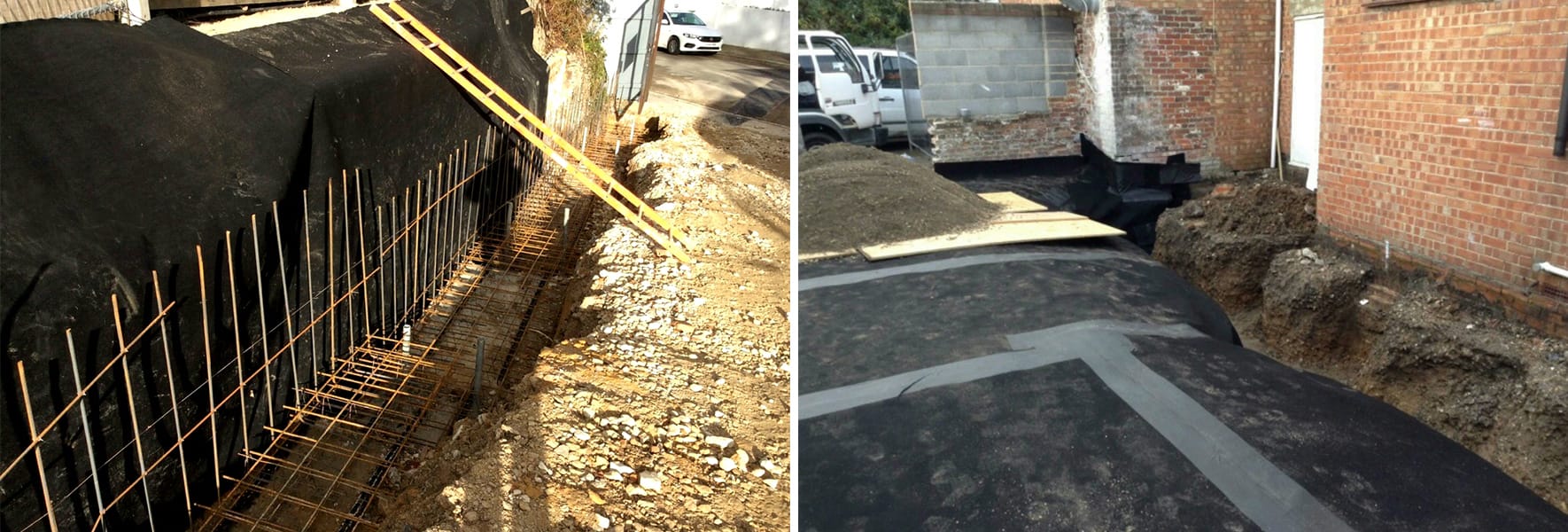.A Japanese Knotweed Membrane is a root barrier specifically designed and tested to block knotweed.
When correctly used Japanese knotweed membrane can either; save you money, resolve legal disputes or divert waste from landfill. Unfortunately, they are all too often poorly specified, badly installed with substandard root barriers incorrectly specified. We, therefore, hope this advisory document helps you avoid the pitfalls that others have made.

What is a Japanese Knotweed Membrane?
People often ask us to explain what a Japanese knotweed membrane is. The answer is simple: it’s a root barrier specifically designed and tested to block Japanese knotweed. Because Japanese knotweed is highly invasive it is often important to segregate contaminated from that which is free from Japanese knotweed rhizome (roots).
How does a Japanese Knotweed Membrane work?
A membrane that is designed to block Japanese knotweed is normally made from polypropylene. It can be buried in the ground either vertically or horizontally. A correctly installed membrane’s primary function is to physically block knotweed rhizome.
When using a Japanese Knotweed Membrane, it is very important to consider how far the barrier should extend past viable knotweed rhizome. This will ensure that the knotweed you are blocking can’t find the extremities of the barrier and grow around it. In some cases, it is advisable that a programme of knotweed treatment through the application of herbicide ensure that any remaining knotweed does not find the perimeter of the barrier.
How long should root barriers remain effective?
The environment agency has stipulated that a root barrier must remain intact for 50 years. However, at PBA Solutions, we are distributors for CuTex Root Barrier which has a predicted to be durable for more than 100 years. Furthermore, CuTex is much more durable and robust that many other barriers due to its unique geo-composite construction.

How do I know if the root barrier is actually a Japanese Knotweed Membrane?
A quick search on the net will reveal many companies selling root barrier for knotweed but do they work? Quite simply the supplier has to able to show that the barrier has been scientifically tested to block Japanese knotweed. To our knowledge, the only product that has been tested in this way is CuTex Root Barrier.
While other root barriers may have had some scientific testing done this has been with annuals plant species which don’t have aggressive rooting systems which make it questionable to whether it is appropriate to rely on such products that not actually what they appear to be.
Why is CuTex the leading Japanese knotweed Membrane?
Not only is CuTex Root Barrier proven scientifically to block Japanese knotweed it is also the only membrane to be permeable. Most root barriers are impermeable blocking the roots and the movement of water and nutrients in soil ecosystems. This severely limits there use whereas a permeable barrier can be used at shallow depths broadening its application often reducing the amount of impacted soil that can be removed from the site.
CuTex works because it is a geo-composite knotweed membrane consisting of a copper sheet mechanically encapsulated between a woven polypropylene geotextile and a high strength nonwoven polypropylene geotextile. The copper acts as a signal layer that all plants avert their growth from. The copper foil only releases minute quantities of the copper ion that does not constitute an ecosystem burden or impact on groundwater.
Where to use a Japanese knotweed Membrane
Between property boundaries: Knotweed rhizome encroachment can be stopped by installing a Japanese knotweed membrane as it will block knotweed rhizome from growing from one property to another. Legally you can be taken to court if knotweed is allowed to encroach upon your neighbour’s property and it does this first through its root system, below ground. Therefore a physical barrier that stops knotweed encroachment is, by far, the best method for overcoming this problem.
Root barrier capping: This is where the most invasive part of knotweed is removed in the upper soil layer before a horizontal and vertical root barrier cap is installed. After installing the root barrier, soil or other clean material can be used to fill the void left. The root barrier cap, when correctly installed, makes a previously knotweed infested space fully usable.
This method of reduced dig and root barrier capping is a very effective solution that diverts waste away from landfill and is very economical when compared to full excavation. Importantly the only type of Japanese knotweed membrane that can be used is a permeable one such as CuTex. For more information see our Japanese knotweed Remediation flyer.
Cell Burial: where space allows it is possible and acceptable to burry knotweed impacted material. While advice must be sought from the Environment Agency burial pits normally need to be wrapped in a Japanese knotweed membrane. When designing a knotweed burial pit also known as a knotweed cell it is important to design a root barrier system that complies with the Environment Agency requirements, is effective and suitably blocks knotweed rhizome.
Need expert advice?
We hope that you have found this post helpful. If you have a problem with Japanese knotweed or are considering a root barrier installation, talk to our experts here at PBA Solutions or visit our online root barrier store.

